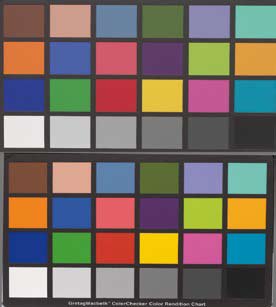articles/Cameras/nikond200-page2
Nikon D200 - part 2 of 1 2 3 4 5 6
by Mike McNamee Published 01/06/2006

Battery Cycle Life The Lithium-ion battery has to be charged before the D200 can be brought into operation, this takes a little over two hours. The camera manual lays claim to between 340 and 1,800 frames depending on the usage (the 340 includes a flash exposure every other shot for example). If this is insufficient then there is a double battery handgrip, as an accessory, which both stabilises the camera for shooting and provides double the battery power. Using the camera to drive a 300mm Nikkor and using mainly manual focus, we shot 200 frames and the battery meter was down to 45% with an estimated 180 shots to go. Out shooting 60 RAW files, mainly macro, we used up 94% of the battery capacity over a period of five hours during which the camera was turned on for most of the time. This was a bit of a surprise as we ran out of camera power before the flash batteries had given up and before we had filled a 1GB card with RAW files. This suggests that you should have about three batteries to shoot a wedding if shooting RAW (which usage). The same battery was retested a day or two later when we shot 300 jpegs over a period of four hours, suggesting that the battery was up to specification and that the additional processing of RAW files imposes quite a burden on the battery discharge cycle. However, Nikon supplied another battery and we managed about 500 jpeg frames between recharges with this one. The matter is thus unresolved but you are urged to carry spares and watch carefully before you embark on a wedding for real.

Optical The chip has a 1.5x magnification over the equivalent 35mm lens. The shutter speeds range from 1/8000th to 30s in 1/3rd stop increments. The flash synch speed is 1/250th with conventional flash although the SB 800 gun gives effective synchronisation up to 1/8000th of a second. All the usual bells and whistles are present but a particular delight is the ability to dial in the data for non-CPU lenses so that they both report the aperture and operate the exposure meter. This worked with our 1970's, 50mm F2.0 Nikkor - a real joy!
The autofocus is improved and seems very quick after the Nikon D100! At cricket we abandoned autofocus in favour of manual focus but found the ability to shift the focus point around the frame really useful, especially when capturing both the wicket keeper and batsman at either end of the frame - normally a central focus position would fly right through the middle and sharpen the buildings at the edge of the ground!
Playback The larger LCD is very clean and sharp although there are still the usual problems in bright sunshine. However the ability to magnify images to check sharpness is welcome.
The menu is larger and particularly clear, with help files available as well.
Please Note:
There is more than one page for this Article.
You are currently on page 2
- Nikon D200 page 1
- Nikon D200 page 2
- Nikon D200 page 3
- Nikon D200 page 4
- Nikon D200 page 5
- Nikon D200 page 6
1st Published 01/06/2006
last update 09/12/2022 14:56:59
More Cameras Articles
There are 21 days to get ready for The Society of Photographers Convention and Trade Show at The Novotel London West, Hammersmith ...
which starts on Wednesday 14th January 2026





